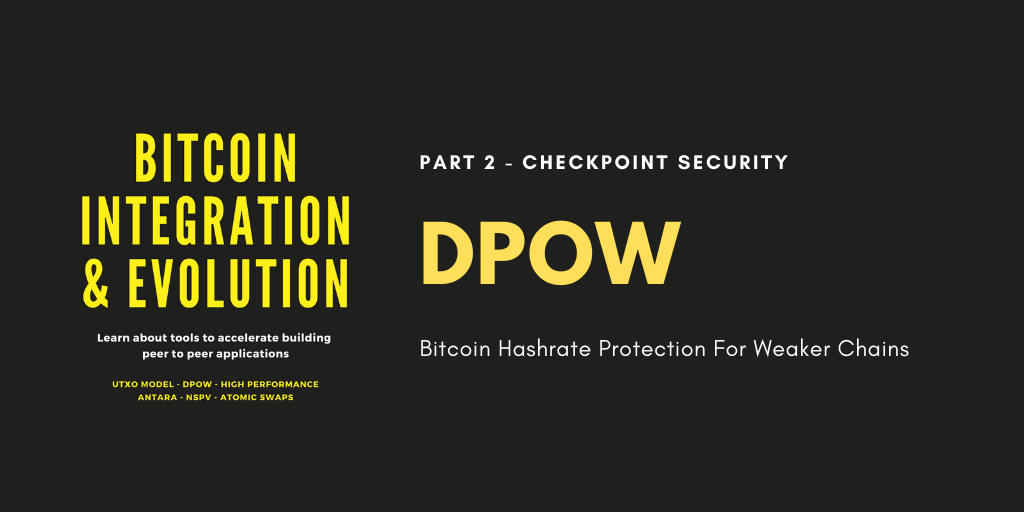

Creating checkpoints in traditional IT work is usually a scheduled backup task, with snapshots and incremental patches. Similarly in blockchain technology, the chain users benefit from some kind of finality so their transactions are not reorganized by orphaned blocks.
Komodo has been running a blockchain checkpoint at approximately every bitcoin block since 2017. The checkpoint is the blockhash of the KMD chain embedded into a bitcoin transaction using the OP_RETURN opcode. This transaction is sent by randomly selecting 13 of the 64 elected & independent notary nodes in the Komodo network, like a sortition in the political sense. It is coordinated by dPoW software in the separate iguana wallet that runs on the notary node. The transaction is signed by all 13 of the randomly selected nodes by multi signature.
Lead developer jl777 has written an essay on dPoW and an article answering some of the questions on centralization of the service has been written.
The first and most secure form of mining to date is called Proof of Work, PoW. Although there are weaknesses, it has stood the test of time in securing the public bitcoin network.
When Komodo sends the blockhash into BTC, and then the reciprocal BTC blockhash is written into the KMD blockchain, this delay of transaction mining from one chain to the other is where the name comes from.
The power consumed by the BTC miners is used to protect the KMD chain by providing a checkpoint mechanism by the iguana wallet software.
A good explanation can be read from this blog post by Satinder Grewal or listened to on this interview with Jason Brown.
Just like the dPoW process works for KMD to BTC, new smart chains built using the Komodo software or the upcoming Antara Composer can piggyback onto KMD.
Suppose a project called ABC wants to use dPoW to secure their project, it would look like ABC to KMD to BTC. The checkpoints of KMD and BTC are used to boost the security of ABC network resources so that every approximately 10 minutes (or more frequently if desired) the ABC chain has a checkpoint to protect against deeply reorganized blocks.
As the technology has matured, new uses continue to manifest... This section will be updated with further content. Examples include the payment streaming technology not yet in production, the nSPV superlight client for use in IoT currently in testing, p2p orderbook propagation for the atomic swap protocol network.
